History
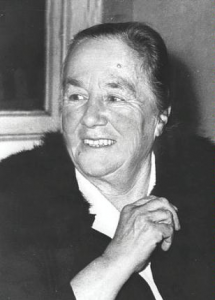 When Hitler began his reign of terror on the Jewish people, along with several other groups that he considered undesirables…the groups who were not of the “Aryan Race,” he proceeded to do unspeakable things to these poor people who could not fight back because they had no weapons. They were a peace-loving people who were just trying to get along with those around them, and those in power. Unfortunately, Hitler didn’t care if they were peace-loving, if they wanted to get along, or be cooperative. Their only crime was that they were not of the “Aryan Race.” For anyone who doesn’t really understand the concept of Aryan, it is this: “The Aryan race is a historical race concept which emerged in the period of the late 19th century and mid-20th century to describe people of Indo-European heritage as a racial grouping.”
When Hitler began his reign of terror on the Jewish people, along with several other groups that he considered undesirables…the groups who were not of the “Aryan Race,” he proceeded to do unspeakable things to these poor people who could not fight back because they had no weapons. They were a peace-loving people who were just trying to get along with those around them, and those in power. Unfortunately, Hitler didn’t care if they were peace-loving, if they wanted to get along, or be cooperative. Their only crime was that they were not of the “Aryan Race.” For anyone who doesn’t really understand the concept of Aryan, it is this: “The Aryan race is a historical race concept which emerged in the period of the late 19th century and mid-20th century to describe people of Indo-European heritage as a racial grouping.”
When Hitler, invaded Poland, he quickly began to turn people against the Jewish people. These people had been living as a part of a community, making an important contribution to Polish society. Hitler began by polluting the minds of the young people first, and then the older people against the Jewish people, saying that they were thieves, and that everything they owned rightfully belonged to the “Aryan” people. Many of the people bought into Hitler’s lies and hatred, but there were those who did not. The problem was that even those who did not agree to help the Jews, had to be careful, because if they didn’t turn in those who helped, it was considered harboring criminals. If they were caught helping the Jews, they could be sent to the work camps or executed.
Since the German invasion of Poland in 1939, the Jewish population had been either forced into ghettos, transported to concentration and labor camps, or murdered. Jewish homes and shops were confiscated and synagogues were burned to the ground. By 1942, things were getting really tough in Warsaw, but a group of Polish Christians refused to stand by and do nothing. So, they put their own lives at risk when they set up the Council for the Assistance of the Jews. The group was led by two women, Zofia Kossak and Wanda Filipowicz. Word about the Jews’ fate finally leaked out in June of 1942, when a Warsaw underground newspaper, the Liberty Brigade, made public the news that tens of thousands of Jews were being gassed at Chelmno, a death camp in Poland. It had been almost seven months since the extermination of prisoners had begun.
At first, people didn’t believe what they heard about the “Final Solution,” which was the mass extermination of European Jewry and the growing network of extermination camps in Poland. Soon, it was difficult to deny. Nevertheless, little was done to stop it. Angry speeches from politicians, followed by threats of postwar reprisals, were heard in places outside Poland. Within Poland, non-Jewish Poles were themselves often the objects of persecution and forced labor at the hands of their Nazi occupiers. Because they were Slavs, they too were considered “inferior” to the Aryan Germans, and therefore, only good as servants and slaves…according to the Nazis anyway. Zofia Kossak and Wanda Filipowicz didn’t care that they could lose their lives, what was going on, was wrong and they could not stand by and do nothing. These two Polish Christians were determined to do what they could to protect their Jewish neighbors.
History says that both women died in 1968, but it is unclear what caused Kossak and Filipowicz’s deaths. It is also unclear whether their mission was to protect the Polish Jews was successful. No matter what the outcome of their plan was, they did the right thing. They saw something that wasn’t right, and they tried to do something to correct the situation. Kossak and Filipowicz were not alone in their struggle to help either. Just two days after the Council was established, the SS, Hitler’s “political” terror police force, rounded up 23 men,  women, and children, and locked some in a cottage and some in a barn. Then they burned them alive. Their crime: suspicion of harboring Jews. They were not convicted or tried, they were just murdered.
women, and children, and locked some in a cottage and some in a barn. Then they burned them alive. Their crime: suspicion of harboring Jews. They were not convicted or tried, they were just murdered.
The Nazi death machine proved overwhelming, even with the bravery of some Polish Christians, and Jewish resistance fighters within the Warsaw ghetto, who rebelled in 1943. Some of the Polish Jews found refuge among their Christian neighbors, in an attempt to elude the SS. Poland became the killing ground for not only Poland’s Jewish citizens, but much of Europe’s as well…approximately 4.5 million Jews were killed in Poland’s death and labor camps by the end of World War II.
 Alvin Kelly was born in Manhattan on May 11, 1893. His story began in a tragic way, because his father died before his birth and his mother died in childbirth with him. Kelly, now a newborn orphan, was raised in orphanages and passed around to various relatives. When Kelly turned 7, he started climbing onto poles and a few years later, he scaled the outside of buildings in his neighborhood…and by the way, his name wasn’t Alvin back then. It was Aloysius Anthony Kelly. He became Alvin when he ran away to go to work on a cargo ship. He was just 13 years old, and he changed his name to Alvin…probably to remain anonymous.
Alvin Kelly was born in Manhattan on May 11, 1893. His story began in a tragic way, because his father died before his birth and his mother died in childbirth with him. Kelly, now a newborn orphan, was raised in orphanages and passed around to various relatives. When Kelly turned 7, he started climbing onto poles and a few years later, he scaled the outside of buildings in his neighborhood…and by the way, his name wasn’t Alvin back then. It was Aloysius Anthony Kelly. He became Alvin when he ran away to go to work on a cargo ship. He was just 13 years old, and he changed his name to Alvin…probably to remain anonymous.
It wasn’t Kelly’s life as a runaway that made him unique, however, because runaways have existed for centuries. His childhood trick of climbing on poles stuck with him for the rest of his life. In fact, during the 1920s and 1930s, Kelly earned a name for himself…and a certain degree of notoriety…by sitting atop flag poles and other odd elevated perches for extended periods of time. I can’t imagine the purpose of such an act, and it’s not the most conventional way to fame, but for Alvin ‘Shipwreck’ Kelly it worked. Shipwreck Kelly, as he became known, is credited with starting the flagpole sitting fad, which, strangely, became popular in the Roaring Twenties, and he even earned a spot in the World Record Book for his sitting ability. I suppose an actor, comedian, magician, and such, needed a gimmick or a nickname, so Kelly began to use the nickname ‘Shipwreck’ claiming that he had survived the sinking of the Titanic. The story was proved to be untrue. Even then, Kelly claimed that he had many other close calls in his life. He said he had survived five shipwrecks, two plane crashes, three car accidents and one train derailment. In reality, Kelly most likely, acquired his nickname in the boxing ring. Not the greatest boxer, critics claimed he was often “adrift and ready to sink.”
As a teen and young man, Kelly hopped from job to job. His unusual ability to climb a pole and perch at the top did earn his work that he might not have otherwise been able to get. In addition to working at sea, he was a stunt pilot, movie double, steelworker, high diver, boxer, and a steeplejack. During World War I, Kelly was an ensign in the Naval Auxiliary Reserve, serving on the USS Edgar F. Luckenbach.
You might be wondering what started his Pole Sitting career. Well, like many a young man, Kelly was not one to back away from a dare. In 1924, he was dared by a friend to climb to the top of a flagpole in Philadelphia 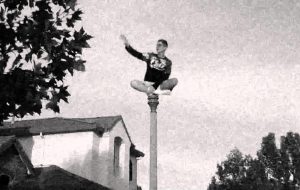 outside a local department store. Of course, Kelly jumped at the chance to prove himself. He quickly ascended the pole and perched himself on top. The stunt attracted a large crowd, many of whom then went inside to shop in the department store. The store manager asked Kelly to stay up there a while…it was good for business! Newspapers carried pictures of Kelly’s stunt, many daredevils began copying his stunt. A fad was born! Soon pole sitting was a popular trick and copycat sitters did it for laughs, on a dare, or to protest. Even though so many others were doing it now, Kelly, the original pole sitter, continued his stunts to the delight of onlookers and journalists. Everyone knew he was the original, and the others were merely copycats.
outside a local department store. Of course, Kelly jumped at the chance to prove himself. He quickly ascended the pole and perched himself on top. The stunt attracted a large crowd, many of whom then went inside to shop in the department store. The store manager asked Kelly to stay up there a while…it was good for business! Newspapers carried pictures of Kelly’s stunt, many daredevils began copying his stunt. A fad was born! Soon pole sitting was a popular trick and copycat sitters did it for laughs, on a dare, or to protest. Even though so many others were doing it now, Kelly, the original pole sitter, continued his stunts to the delight of onlookers and journalists. Everyone knew he was the original, and the others were merely copycats.
Never content, Kelly continued to look for ways to outdo his latest tricks. In 1926 in Saint Louis, he stayed perched atop a pole for seven days and one hour. The next year, in June of 1927 in Newark, New Jersey, he extended his record to twelve days. Next, it was a 23 day sit on a flagpole in Carlin’s Park in Baltimore in 1929. His final record was set in 1930 when he stayed on a flagpole on Atlantic City’s Steel Pier for 49 days and one hour. I don’t know about you, but I can’t begin to imagine such extended days sitting on a flagpole. Nevertheless, for Kelly, it seemed to be a normal part of his daily routine. Newspapers of the 1920s loved to feature photographs of Kelly “sitting high in the air, especially ones of him doing everyday things, like shaving or reading a newspaper or brushing his teeth. During his sits, Kelly rarely ate, sustaining himself on coffee and cigarettes. Although he used a leg tether as a safeguard against falling, He learned to sleep sitting upright and he explained that he slept with his thumbs stuck in holes in the pole. If he started to lean one way or the other in his sleep, the pain in his thumbs would wake him in time for him to right himself.”
Kelly toured across the country during the peak of his fame, and charged admission for people to see him sitting on a flagpole. I would find watching someone sit on a pole would be boring, but people did. He once estimated that he spent 20,613 hours sitting on flag poles in his lifetime, including about 1,400 hours in  pouring down rain and 210 hours in sub-freezing temperatures. He was often hired to do publicity stunts because business owners knew he could draw a crowd. For example, on October 13, 1939, Kelly was hired to promote National Donut Dunking Week by sitting on a pole in Manhattan and eating 13 donuts dipped in coffee. I wonder how much they paid him for that stunt.
pouring down rain and 210 hours in sub-freezing temperatures. He was often hired to do publicity stunts because business owners knew he could draw a crowd. For example, on October 13, 1939, Kelly was hired to promote National Donut Dunking Week by sitting on a pole in Manhattan and eating 13 donuts dipped in coffee. I wonder how much they paid him for that stunt.
As the Great Depression of the 1930s progressed, people became less interested in Kelly’s tricks…and less tolerant. In 1935, he attempted to break his own record again, but the Bronx police said he was creating a public nuisance. The police threatened to chop down his pole, if he didn’t come down and when he did, he was promptly arrested. His last attempt at pole sitting was in Orange, Texas, in 1952. That day, while sitting on the pole, Kelly suffered two heart attacks and was forced to come down. He announced his retirement from pole sitting and died a week later.
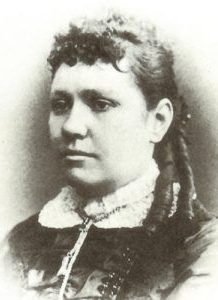 Alice Ivers Tubbs was born in Devonshire, England on February 17, 1851. She was the daughter of a conservative schoolmaster. While Alice was still a small girl, she moved with her family to the United States. The family first settled in Virginia, where Alice attended an elite boarding school for women. When she was a teenager, the family moved with the silver rush to Leadville, Colorado. As a young girl, Alice was raised to be a well-bred young lady, so few people would ever expect her to be known as “Poker Alice.” Nevertheless, marriage can change a person. While living in Leadville, Alice met a mining engineer named Frank Duffield, whom she married when she was just 20 years old. In the mining camps, gambling’s was quite common, and Frank was an enthusiastic player. He enjoyed visiting the gambling halls in Leadville and Alice naturally went along with him, rather than staying home alone. Alice stood quietly and watch her husband play…at first, but Alice was smart, and she picked up the game of poker easily. Soon she was sitting in on the games, and she was winning. Alice’s marriage to Frank Duffield was short-lived. Duffield, who worked in the mines as part of his job, was killed in an explosion. Needing to make a living, Alice, who was well educated, could have taught school, but even with 35,000 residents in Leadville, there was no school. There were also few jobs available for women, and those there were, did not appeal to Alice, so she decided to make a living gambling. Though Alice preferred the game of poker, she also learned to deal and play Faro. Very soon, she was in high demand…as a player and a dealer. Alice was a petite 5 foot 4 inch beauty, with blue eyes and thick brown hair. She was very rare in that she was a “lady” in a gambling hall…and not of the “soiled dove” variety. And Alice loved the latest fashions, she was a sight for the sore eyes of many a miner. Every time Alice had a big win, she began to take trips to New York City to buy the latest fashions.
Alice Ivers Tubbs was born in Devonshire, England on February 17, 1851. She was the daughter of a conservative schoolmaster. While Alice was still a small girl, she moved with her family to the United States. The family first settled in Virginia, where Alice attended an elite boarding school for women. When she was a teenager, the family moved with the silver rush to Leadville, Colorado. As a young girl, Alice was raised to be a well-bred young lady, so few people would ever expect her to be known as “Poker Alice.” Nevertheless, marriage can change a person. While living in Leadville, Alice met a mining engineer named Frank Duffield, whom she married when she was just 20 years old. In the mining camps, gambling’s was quite common, and Frank was an enthusiastic player. He enjoyed visiting the gambling halls in Leadville and Alice naturally went along with him, rather than staying home alone. Alice stood quietly and watch her husband play…at first, but Alice was smart, and she picked up the game of poker easily. Soon she was sitting in on the games, and she was winning. Alice’s marriage to Frank Duffield was short-lived. Duffield, who worked in the mines as part of his job, was killed in an explosion. Needing to make a living, Alice, who was well educated, could have taught school, but even with 35,000 residents in Leadville, there was no school. There were also few jobs available for women, and those there were, did not appeal to Alice, so she decided to make a living gambling. Though Alice preferred the game of poker, she also learned to deal and play Faro. Very soon, she was in high demand…as a player and a dealer. Alice was a petite 5 foot 4 inch beauty, with blue eyes and thick brown hair. She was very rare in that she was a “lady” in a gambling hall…and not of the “soiled dove” variety. And Alice loved the latest fashions, she was a sight for the sore eyes of many a miner. Every time Alice had a big win, she began to take trips to New York City to buy the latest fashions.
Due to her traveling from one mining camp to another to play poker, Alice soon acquired the nickname “Poker Alice.” In addition to playing the game, she often worked as a dealer, in cities all over Colorado including Alamosa, Central City, Georgetown, and Trinidad. Later on, Alice began to puff on large black cigars, still wearing her fashionable frilly dresses. She, nevertheless, never gambled on Sundays because of her religious beliefs. Alice carried a .38 revolver and wasn’t afraid to use it. It was rather a necessity, due to her lifestyle. Alice soon left Colorado and made her way to Silver City, New Mexico, where she broke the bank at the Gold Dust Gambling House, winning some $6,000. The win was followed by a trip to New York City, to replenish her wardrobe of fashionable clothing. Afterward, she returned to Creede, Colorado. She went to work as a dealer in Bob Ford’s saloon…the man who had earlier killed Jesse James. Alice later moved to Deadwood, South Dakota around 1890. In Deadwood, she met a man named Warren G. Tubbs, who worked as a housepainter in Sturgis, but sidelined as a dealer and  gambler. Alice usually beat Tubbs at poker, but that didn’t bother him. He was taken with her and they began to see each other socially. Once a drunken miner threatened Tubbs with a knife, Alice pulled out her .38 and put a bullet into the miner’s arm. I’m sure that man thought the threat was Tubbs, but the man should have watched Alice in stead. Later, the couple married and had seven children…four sons and three daughters. Because Tubbs was a painter by trade, he, along with Alice’s gambling profits, supported the family. The family moved out of Deadwood, to homesteaded a ranch near Sturgis on the Moreau River. Finally, Alice found something she loved more than gambling…for the most part. She helped with the ranch and raised her children. Then, fate would again deal Alice a bad hand. Tubbs was diagnosed with tuberculosis. Alice refused to leave his side. She planned to nurse him back to health. Tubbs lost his fight, and died of pneumonia in the winter of 1910. Alice was determined to give him a proper burial, so she loaded him into a horse-drawn wagon to take his body to Sturgis. It is thought that she had to pawn her wedding ring to pay for the funeral and afterward, went to a gambling parlor to earn the money to get her ring back.
gambler. Alice usually beat Tubbs at poker, but that didn’t bother him. He was taken with her and they began to see each other socially. Once a drunken miner threatened Tubbs with a knife, Alice pulled out her .38 and put a bullet into the miner’s arm. I’m sure that man thought the threat was Tubbs, but the man should have watched Alice in stead. Later, the couple married and had seven children…four sons and three daughters. Because Tubbs was a painter by trade, he, along with Alice’s gambling profits, supported the family. The family moved out of Deadwood, to homesteaded a ranch near Sturgis on the Moreau River. Finally, Alice found something she loved more than gambling…for the most part. She helped with the ranch and raised her children. Then, fate would again deal Alice a bad hand. Tubbs was diagnosed with tuberculosis. Alice refused to leave his side. She planned to nurse him back to health. Tubbs lost his fight, and died of pneumonia in the winter of 1910. Alice was determined to give him a proper burial, so she loaded him into a horse-drawn wagon to take his body to Sturgis. It is thought that she had to pawn her wedding ring to pay for the funeral and afterward, went to a gambling parlor to earn the money to get her ring back.
For Alice, the time spent on the ranch were some of the happiest days of her life and that during those years, she didn’t miss the saloons and gambling halls. Alice liked the peace and quiet of the ranch. Still, she had to make a living, so after Tubbs’ death, she hired a man named George Huckert to take care of the homestead, and she moved to Sturgis to earn her way. Huckert quickly fell in love with Alice and proposed marriage to her several times. Alice didn’t really love him, but finally married him, saying flippantly, “I owed him so much in back wages; I figured it would be cheaper to marry him than pay him off. So I did.” Once again, the marriage would be short. Alice was widowed once again when Huckert died in 1913.
During the Prohibition years, Alice opened a saloon called “Poker’s Palace” between Sturgis and Fort Meade that provided not only gambling and liquor, but also “women” who serviced the customers. One night, a drunken soldier began a fight in the saloon. He was destroying the furniture, and causing a ruckus. Alice pulled her .38 and shot the man. While in jail awaiting trial, she calmly smoked cigars and read the Bible. She was acquitted on grounds of self-defense, but her saloon had been shut down. Now, in her 70s and with her beauty and fashionable gowns long gone, Alice struggled in her last years. She continued to gamble, but these days, she dressed in men’s clothing. Once in a while, she was featured at 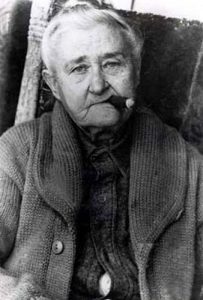 events like the Diamond Jubilee, in Omaha, Nebraska, as a true frontier character, where she was known to have said, “At my age, I suppose I should be knitting. But I would rather play poker with five or six ‘experts’ than eat.” She continued to run a “house” of ill-repute in Sturgis during her later years and was often arrested for drunkenness and keeping a disorderly house. Though she paid her fines, she continued to operate the business until she was finally arrested for repeated convictions of running a brothel and sentenced to prison. The governor took pity on Alice, who was then 75 years old, and pardoned her. At the age of 79, Alice underwent a gall bladder operation in Rapid City. Unfortunately, she died of complications on February 27, 1930. She was buried at Saint Aloysius Cemetery in Sturgis, South Dakota. In her lifetime, Alice claimed to have “won more than $250,000 at the gaming tables and never once cheated.” In fact, one of her favorite sayings was, “Praise the Lord and place your bets. I’ll take your money with no regrets.”
events like the Diamond Jubilee, in Omaha, Nebraska, as a true frontier character, where she was known to have said, “At my age, I suppose I should be knitting. But I would rather play poker with five or six ‘experts’ than eat.” She continued to run a “house” of ill-repute in Sturgis during her later years and was often arrested for drunkenness and keeping a disorderly house. Though she paid her fines, she continued to operate the business until she was finally arrested for repeated convictions of running a brothel and sentenced to prison. The governor took pity on Alice, who was then 75 years old, and pardoned her. At the age of 79, Alice underwent a gall bladder operation in Rapid City. Unfortunately, she died of complications on February 27, 1930. She was buried at Saint Aloysius Cemetery in Sturgis, South Dakota. In her lifetime, Alice claimed to have “won more than $250,000 at the gaming tables and never once cheated.” In fact, one of her favorite sayings was, “Praise the Lord and place your bets. I’ll take your money with no regrets.”
 When people think of Venice, Italy, they think of the canals and the boats. I think most of us think the city is pretty much streets of water, and buildings that somehow stand in the water…strong and immovable against the water. Venice is the center of the lagoon of Venice, which extends over a length of 25 miles around the city. While it seems like the city is covered in water, only 11% of the lagoon is permanently covered with water, while the rest of the lagoon is islands or mudflats and marshes (Laguna Morta). The water stays fresh because, seawater from the Adriatic flows into the lagoon through three large passages, Bocca di Lido, Bocca di Malamocco, and Bocca di Chioggia, twice daily. This process provides a natural water exchange. Still, 11% water can sure look like a lot, especially when every touristy picture we see involves the canals and gondolas. So, to think of a situation whereby a flood could become tragic in Venice, is a strange thought for anyone who doesn’t really know Venice…like me.
When people think of Venice, Italy, they think of the canals and the boats. I think most of us think the city is pretty much streets of water, and buildings that somehow stand in the water…strong and immovable against the water. Venice is the center of the lagoon of Venice, which extends over a length of 25 miles around the city. While it seems like the city is covered in water, only 11% of the lagoon is permanently covered with water, while the rest of the lagoon is islands or mudflats and marshes (Laguna Morta). The water stays fresh because, seawater from the Adriatic flows into the lagoon through three large passages, Bocca di Lido, Bocca di Malamocco, and Bocca di Chioggia, twice daily. This process provides a natural water exchange. Still, 11% water can sure look like a lot, especially when every touristy picture we see involves the canals and gondolas. So, to think of a situation whereby a flood could become tragic in Venice, is a strange thought for anyone who doesn’t really know Venice…like me.
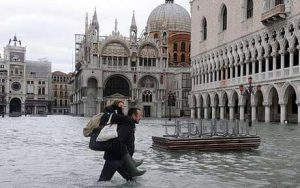
On December 1, 2008, Venice experienced the biggest flood in more than twenty years. The waters rose more than five feet above normal levels. As with any flood, many of Venice’s streets, including Saint Mark’s Square, were submerged. Venice has flooding for about two hundred days every year, and the Venetian authorities were working to complete an underwater dam by 2011. Unfortunately, that fact didn’t help the city in 2008. Even with unusually high tides because of the new moon, residents were not surprised to see the usual low-lying lanes under water. Nevertheless, this day was different. Pretty much the entire city was covered by the lagoon. People stayed inside to wait out the water, only going outside when they were sure the water was definitely going down. The townspeople went outside to take pictures and explore the current townscape…to see what was underwater now. They were quite surprised at the scene before them.
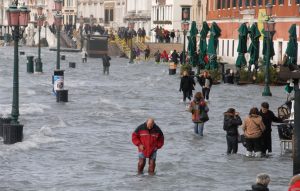
By mid-afternoon, the water had gone down to more normal levels, but all over the world, the papers made it seem like the whole city was sinking. The high tide would come again on December 2nd, but it was nothing like December 1st. Cleanup was still underway on December 2nd, of course, but most businesses were open again. I suppose that if your city spends it’s life in one stage of flood or another, this extra high tide was just something to be taken in stride. Yes, people were surprised at the higher than normal flood waters from the tide, but they weren’t panicked. It was just another day in the life of Venice.

 The ship, SS Daniel J. Morrell was a 603 foot Great Lakes freighter, first launched August 22, 1906. It was operated by Cambria Steamship Company. The freighter was used to carry bulk cargoes such as iron ore. SS Daniel J. Morrell was named for Daniel Johnson Morrell, a Republican member of the US House of Representatives from Pennsylvania. In 1855 he moved to Johnstown, Pennsylvania, and became general manager of the Cambria Iron Company, which was the greatest manufacturer of iron and steel in the United States until the Johnstown Flood. As a former general manager of Cambria Steamship Company…Morrell died August 20, 1885…naming the ship after him made sense.
The ship, SS Daniel J. Morrell was a 603 foot Great Lakes freighter, first launched August 22, 1906. It was operated by Cambria Steamship Company. The freighter was used to carry bulk cargoes such as iron ore. SS Daniel J. Morrell was named for Daniel Johnson Morrell, a Republican member of the US House of Representatives from Pennsylvania. In 1855 he moved to Johnstown, Pennsylvania, and became general manager of the Cambria Iron Company, which was the greatest manufacturer of iron and steel in the United States until the Johnstown Flood. As a former general manager of Cambria Steamship Company…Morrell died August 20, 1885…naming the ship after him made sense.
SS Daniel J. Morrell, along with her sister ship, SS Edward Y. Townsend were making the last run of the season. On November 29, 1966, they encountered a storm with winds exceeding 70 miles per hour and swells that topped the height of the ship, at 20 to 25 feet. Edward Y. Townsend decided to take shelter in the St. Clair River. That left Daniel J. Morrell alone on the waters north of Pointe Aux Barques, Michigan, heading for the protection of Thunder Bay. As the storm grew worse, and at 2:00pm, the Morrell began to break up, which forced the crew onto the deck. Many of the crew panicked and jumped to their deaths in the 34° Lake Huron waters. At 2:15pm, the ship’s hull broke and allowed water to pour in, and the remaining crewmen loaded into a raft on the bow of the vessel. While they waited for the ship to break up and the raft to be thrown into the lake, there were shouts that a ship had been spotted off the port bow. Unfortunately, moments later, it became clear that  the looming object was not another ship, but Daniel J. Morrell’s aft section, barreling towards them under the power of the ship’s engine. The ship broke apart, throwing the rafts into the water heading into the distance.
the looming object was not another ship, but Daniel J. Morrell’s aft section, barreling towards them under the power of the ship’s engine. The ship broke apart, throwing the rafts into the water heading into the distance.
Tragically, Daniel J. Morrell was not reported missing until 12:15pm the following afternoon, November 30th. By then, the vessel was overdue at her destination, Taconite Harbor, Minnesota. The US Coast Guard issued a “be on the lookout” alert and dispatched several vessels and aircraft to search for the missing freighter. At around 4:00pm on November 30th, a Coast Guard helicopter located the lone survivor, 26-year-old Watchman Dennis Hale, near frozen and floating in a life raft with the bodies of three of his crewmates. Hale had survived the nearly 40 hour ordeal in frigid temperatures wearing only a pair of boxer shorts, a lifejacket, and a pea coat. Since his crewmates had passed away, poor Hale was left alone with his thoughts…trying to avoid thinking about the cold bodies lying next to him. The survey of the wreck found the shipwreck in 220 feet of water with the two sections 5 miles apart.
Lost in the tragic sinking were Norman M. Bragg, Stuart A. Campbell, John J. Cleary Jr, Arthur I. Crawley, George A. Dahl, Larry G. Davis, Arthur S. Fargo, Charles H. Fosbender, Saverio Grippi, John M. Groh (missing),  Nicholas P. Homick, Phillip E. Kapets, Chester Konieczka, Duncan R. MacLeod, Joseph A. Mahsem, Valmour A. Marchildon, Ernest G. Marcotte, Alfred G. Norkunas, David L. Price, Henry Rischmiller, Stanley J. Satlawa (missing), John H. Schmidt, Charles J. Sestakauskas, Wilson E. Simpson, Arthur E. Stojek, Leon R. Truman, Albert P. Wieme, and Donald E. Worcester. The remains of 26 of the 28 lost crewmen were eventually recovered, with most of them found in the days following the sinking. Still, bodies from Daniel J. Morrell continued to be found well into May of the following year. The two men whose bodies were never recovered were declared legally dead in May 1967. The sole survivor of the sinking, Dennis Hale, died of cancer on September 2, 2015, at the age of 75.
Nicholas P. Homick, Phillip E. Kapets, Chester Konieczka, Duncan R. MacLeod, Joseph A. Mahsem, Valmour A. Marchildon, Ernest G. Marcotte, Alfred G. Norkunas, David L. Price, Henry Rischmiller, Stanley J. Satlawa (missing), John H. Schmidt, Charles J. Sestakauskas, Wilson E. Simpson, Arthur E. Stojek, Leon R. Truman, Albert P. Wieme, and Donald E. Worcester. The remains of 26 of the 28 lost crewmen were eventually recovered, with most of them found in the days following the sinking. Still, bodies from Daniel J. Morrell continued to be found well into May of the following year. The two men whose bodies were never recovered were declared legally dead in May 1967. The sole survivor of the sinking, Dennis Hale, died of cancer on September 2, 2015, at the age of 75.
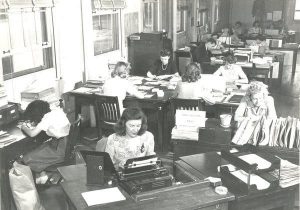 During World War II, when men were in short supply due to deployments, and the secret codes of the Japanese and Germans were causing major problems, the American government was faced with a difficult decision. They needed people who were qualified to break the codes of their enemies, and the only code breakers were in very short supply. The decision was made to search out college-educated women, preferably with degrees in Mathematics, Physics, and those who were fluent in other languages. There weren’t a lot of college educated women in those days, and even fewer with degrees in math or physics, but there were teachers. The Navy and the Army began recruiting these women. The women were required to go through a battery of tests and interviews to see if they had what it took to become code breakers. Many did not, but those who did were offered an exciting, but stressful career.
During World War II, when men were in short supply due to deployments, and the secret codes of the Japanese and Germans were causing major problems, the American government was faced with a difficult decision. They needed people who were qualified to break the codes of their enemies, and the only code breakers were in very short supply. The decision was made to search out college-educated women, preferably with degrees in Mathematics, Physics, and those who were fluent in other languages. There weren’t a lot of college educated women in those days, and even fewer with degrees in math or physics, but there were teachers. The Navy and the Army began recruiting these women. The women were required to go through a battery of tests and interviews to see if they had what it took to become code breakers. Many did not, but those who did were offered an exciting, but stressful career.
Upon arrival in Washington DC, these women found themselves in direct competition with the men, and the men didn’t like it one bit. Nevertheless, the feelings the men had for these women who were a threat to their  job, was at least matched by what the public thought of these women who, sworn to secrecy, had to lie about the work they did. They told people they were secretaries, and glorified waitresses, bring coffee to their bosses, while adding a bit of “interest” to the office. People thought these women were “loose” women…”gold diggers” looking for a husband, and because of the deep need for security, the women were forced to let people think what they wanted too.
job, was at least matched by what the public thought of these women who, sworn to secrecy, had to lie about the work they did. They told people they were secretaries, and glorified waitresses, bring coffee to their bosses, while adding a bit of “interest” to the office. People thought these women were “loose” women…”gold diggers” looking for a husband, and because of the deep need for security, the women were forced to let people think what they wanted too.
No matter what the public thought, these women code breakers were a vital part of the war effort. Our men were dying because we had no idea where the ships and submarines were until they struck. These women turned the tables in favor of the Allies, though few people ever knew it. The women were told they must never speak of what they did there…even after the war, and most of them took their secrets to the grave. While the women were forced to keep their secrets, they all knew that what they were doing mattered. They also knew things about the war, that others didn’t know. They knew the danger the Allied ships were in. They knew about ship that were torpedoed, almost as soon as it happened, and sometimes the ships were ones that friends and loved ones were stationed on…meaning they knew of their loved ones deaths almost immediately after they were killed.
At great sacrifice to themselves, the women code breakers fought a battle in the war that many people never  knew about. The stress, and just the shear gravity of the situation wore of the women. Some later had to seek psychiatric help, and some had nervous breakdowns, still they kept their secrets, lest their services were ever needed again. They kept them in case they ever had to be used again. They kept them because they had orders, and they would follow their orders no matter what. The work had been tedious, and sometimes codes took a long time to crack, but the determined women stuck it out, although most would never be thanked for their hard work. It didn’t matter. Their work was vital, and they were saving lives. That would have to be enough to carry them through the rest of their lives.
knew about. The stress, and just the shear gravity of the situation wore of the women. Some later had to seek psychiatric help, and some had nervous breakdowns, still they kept their secrets, lest their services were ever needed again. They kept them in case they ever had to be used again. They kept them because they had orders, and they would follow their orders no matter what. The work had been tedious, and sometimes codes took a long time to crack, but the determined women stuck it out, although most would never be thanked for their hard work. It didn’t matter. Their work was vital, and they were saving lives. That would have to be enough to carry them through the rest of their lives.
 Most people, men anyway, think that it is only women who are fashion conscious to a fault. While many women are very fashion conscious, so are many men, and the fashions that some of the men wore can be just as dangerous. When fashion consists of the wearing of articles of clothing or accessories that have the ability to cause death or injury, we are in danger of sacrificing too much in the name of fashion.
Most people, men anyway, think that it is only women who are fashion conscious to a fault. While many women are very fashion conscious, so are many men, and the fashions that some of the men wore can be just as dangerous. When fashion consists of the wearing of articles of clothing or accessories that have the ability to cause death or injury, we are in danger of sacrificing too much in the name of fashion.
Some fashions do no harm, but looking back on them, we can see just how silly they looked. Nevertheless, powdered wigs were in fashion for men in several different centuries. Long hair was considered a show of status, for both men and women over the years. In ancient Greece, long male hair was a symbol of wealth and power, while a shaven head was appropriate for a slave. The problem occurred when the person, usually the men, but women too, had thinning hair. If their social status depended on that hair, they would need a way to fix the problem when it did not exist. The powdered wig helped with that, and some men wore their wigs in very elaborate styles. In the 1760s, aristocratic British men donned large wigs with a small hat or feather at the top. The young men who took up this fashion trend reportedly brought it back from their “Grand Tour” across Continental Europe in which they intended to “deepen cultural knowledge.” The style is, in fact, named after the Italian pasta dish…macaroni, signifying sophistication and worldliness. It is here that we get the song many of us have wondered about called, “Yankee Doodle,” the lyrics of which pointed out that the feather on top was supposedly called macaroni.
The shoes of the men have taken some strange turns as well. Known as the Poulaine, this super long shoe  reigned supreme with men across Europe in the late 14th century. The shoes, called Crakow were named after Krákow, Poland because they were introduced to England by the Polish nobles. Once the shoes were seen at court, they became all the rage…even though the shoes were six to twenty four inches long. I’m sure you are thinking to yourself, “Who would be crazy enough to wear these?” Well, I’ll tell you that current styles (or maybe just a year or so in the past) saw women, and men too, wearing shoes that had an extra long pointed toe, so it isn’t just an oddity of 14th century Britain. The shoes were a quick indicator of social status…the longer the shoe, the higher the wearer’s station. Some of these shoes were so long that chains were sometimes strung from the toe of the Crakow to the knee to allow the wearer to walk. Other times the toes were stuffed with material for the same reason, making the toes stiff. The strange shoes were considered ridiculous, vain, and dangerous by many conservatives and church leaders, who called them “devil’s fingers.”
reigned supreme with men across Europe in the late 14th century. The shoes, called Crakow were named after Krákow, Poland because they were introduced to England by the Polish nobles. Once the shoes were seen at court, they became all the rage…even though the shoes were six to twenty four inches long. I’m sure you are thinking to yourself, “Who would be crazy enough to wear these?” Well, I’ll tell you that current styles (or maybe just a year or so in the past) saw women, and men too, wearing shoes that had an extra long pointed toe, so it isn’t just an oddity of 14th century Britain. The shoes were a quick indicator of social status…the longer the shoe, the higher the wearer’s station. Some of these shoes were so long that chains were sometimes strung from the toe of the Crakow to the knee to allow the wearer to walk. Other times the toes were stuffed with material for the same reason, making the toes stiff. The strange shoes were considered ridiculous, vain, and dangerous by many conservatives and church leaders, who called them “devil’s fingers.”
In the 19th century, men began wearing detachable collars, that were heavily starched until they were quite stiff. While the collars didn’t look all that odd, they could be deadly. Because they were so heavily starched, taken to the extreme of the collar being nearly unbendable, and because they were attached with a singular or  pair of studs, the collar could slowly asphyxiate a man, if he fell asleep or passed out while drinking. It had a similar effect to a cord being wrapped tightly around the poor man’s neck. Another dangerous aspect of the collar was its pointed corners. A Saint Louis man, wearing one of these collars, tripped in the street and the pointed corners of the collar jabbed into this throat, “making two ugly gashes.” If the gash happened to be in the vicinity of the Jugular vein, death could come quite quickly. These collars were so lethal, in fact, that they were known as “the father killer.” I can only imagine how many women and children pleaded with their husbands or fathers not to wear the collar, which maybe should have been called the choker.
pair of studs, the collar could slowly asphyxiate a man, if he fell asleep or passed out while drinking. It had a similar effect to a cord being wrapped tightly around the poor man’s neck. Another dangerous aspect of the collar was its pointed corners. A Saint Louis man, wearing one of these collars, tripped in the street and the pointed corners of the collar jabbed into this throat, “making two ugly gashes.” If the gash happened to be in the vicinity of the Jugular vein, death could come quite quickly. These collars were so lethal, in fact, that they were known as “the father killer.” I can only imagine how many women and children pleaded with their husbands or fathers not to wear the collar, which maybe should have been called the choker.
I can understand the need of people to have a certain fashion sense, as I am also one who likes to look up to date and to have a good fashion sense too, but people really need to also consider their own safety when it comes to style. It pays to listen to others who might know something about this certain idea of fashion, that could not only benefit you, but possibly save your life.

 Women have always had an eye for fashion, but I can’t say that having an “eye” for fashion, is the same as having common sense for fashion. In the Victorian era, Bottle-green dresses were all the rage. I understand the love of the color green, and how a beautiful emerald green might be a coveted color. The problem occurs with the process of obtaining that color. The process used to achieve this lovely shade of green involved the fabric being dyed using large amounts of arsenic…yes, rat poison!! Some women suffered nausea, impaired vision, and skin reactions to the dye. They endured the suffering because the dresses were only worn on special occasions, thereby limiting exposure to the arsenic in the fabric. By contrast, it was the garment makers were the real sufferers. Many of them became very ill and even died to bring this trend to the fashionable set.
Women have always had an eye for fashion, but I can’t say that having an “eye” for fashion, is the same as having common sense for fashion. In the Victorian era, Bottle-green dresses were all the rage. I understand the love of the color green, and how a beautiful emerald green might be a coveted color. The problem occurs with the process of obtaining that color. The process used to achieve this lovely shade of green involved the fabric being dyed using large amounts of arsenic…yes, rat poison!! Some women suffered nausea, impaired vision, and skin reactions to the dye. They endured the suffering because the dresses were only worn on special occasions, thereby limiting exposure to the arsenic in the fabric. By contrast, it was the garment makers were the real sufferers. Many of them became very ill and even died to bring this trend to the fashionable set.
Another crazy style was known as Panniers, which comes from the French word “panier,” meaning “basket.” These were popular in the 17th and 18th centuries. The look involved a boxed petticoat to expanded the width of skirts and dresses. The contraption stood out on either side of the waistline…straight out!! Panniers varied in size and were made of whalebone, wood, metal, and sometimes reeds. Extremely large panniers were worn mostly on special occasions and reflected the wearer’s social status. Even the servants wore them, though in a much smaller version. Two women couldn’t walk through an entrance at the same time or sit on a couch together, because their panniers took up an entire extra seat or more. The device was also uncomfortable, limiting movement and activity.
In the 1910s, French designer Paul Poiret, who was well known as “The King of Fashion” in America, debuted the hobble skirt. The long, close-fitting skirts forced women who wore them to adopt mincing, tiny steps. True, Poiret’s design liberated women from heavy petticoats and constricting corsets. But as he said, “Yes, I freed the 
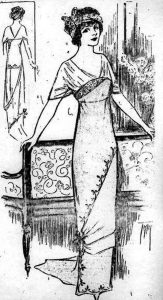 bust. But I shackled the legs.” This makes me wonder why women allow their fashion ideas to come from men…who don’t have to wear the clothes they design. Some of these “fashions” were enough to make a woman faint, because her corset was too tight, and she could not get sufficient air.
bust. But I shackled the legs.” This makes me wonder why women allow their fashion ideas to come from men…who don’t have to wear the clothes they design. Some of these “fashions” were enough to make a woman faint, because her corset was too tight, and she could not get sufficient air.
During the Roaring ’20s, women no longer wanted the hourglass shape. Now the style was the boyish flapper figure. Underwear had to change to assist in this new look, and women who were “busty,” had a big problem and the underwear needed a big overhaul. The goal of every undergarment was to flatten the breasts and torso, so that flapper dresses could hang straight down without any curvaceous interruptions. Corset-makers R. and W.H. Symington invented a garment, the Symington Side Lacer, that would flatten the breasts. The wearer would slip the garment over her head and pull the straps and side laces tight to smooth out curves. Other manufacturers designed similar devices. The Miracle Reducing Rubber Brassiere was “scientifically designed without bones or lacings,” while the Bramley Corsele combined the brassiere and corset into one piece that easily layered under dresses. I wonder how anyone could breathe in these prisons known as underwear.
The Crinoline, also known as the hoop skirt, was a bell-shaped device that pushed the volume of skirts to an extreme degree. Worn in the 1800s by Victorian women, Crinolines were originally petticoats made of linen stiffened with horsehair. Wonderful…now we are wearing horsehair under our skirts. This created a big problem. It was just too hot with so many petticoats. Later, the invention of the steel cage crinoline offered the same voluminous look without the extra heat and bulk of thick petticoats. These undergarments were clumsy and hard to control, but they were also dangerous. In 1858, a young woman in Boston died when her large skirt caught embers from a fireplace in her parlor and went up in flames. It all happened to fast to save her. Nineteen such deaths occurred in a two-month period. That is a heavy price to pay in the name of fashion.
And then, there was the “Grecian bend,” the Victorian bustle. It arrived on the scene in the 1870s. The earliest version of this trend simply featured excess fabric gathered and draped at the back of a dress. Eventually, though, skirts were puffed up with large cushions filled with straw. Ladies who wore them ended up with exaggerated figures with outthrust hindquarters. The bustle was frequently a target of ridicule. This style 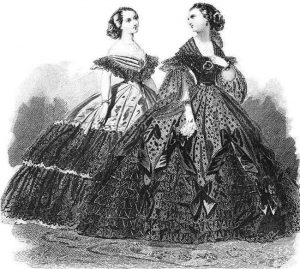
 reminds me of the “padded seat” of modern day leggings, though the modern day version isn’t quite so exaggerated. In 1868, Laura Redden Searing, using the pen name Howard Glyndon, wrote about the agony young women put themselves through for fashion in the New York Times, “If you knew the Spartan courage which is required to go through an ordeal of this sort for two or three hours at a time, you would not wonder that she has not an idea left in her head after her daily display is over,” she said. Hahahaha!! That sounds reasonable to me.
reminds me of the “padded seat” of modern day leggings, though the modern day version isn’t quite so exaggerated. In 1868, Laura Redden Searing, using the pen name Howard Glyndon, wrote about the agony young women put themselves through for fashion in the New York Times, “If you knew the Spartan courage which is required to go through an ordeal of this sort for two or three hours at a time, you would not wonder that she has not an idea left in her head after her daily display is over,” she said. Hahahaha!! That sounds reasonable to me.
 Marie Sklodowska was born in an era when women seldom got a very long education, if they got one at all. Born on November 7, 1867 in Warsaw (modern-day Poland). Sklodowska was the youngest of five children, following siblings Zosia, Józef, Bronya and Hela. Their parents were both teachers. Her father, Wladyslaw, was a math and physics instructor. When she was only 10, Sklodowska lost her mother, Bronislawa, to tuberculosis. Sklodowska, being a woman, probably should have grown up to be a wide and mother, dependent on her husband for everything…not that that is a horrible thing, because it isn’t, but it was not all she wanted. She had a good mind for Physics and Chemistry…both subjects were almost unheard of for women in those days.
Marie Sklodowska was born in an era when women seldom got a very long education, if they got one at all. Born on November 7, 1867 in Warsaw (modern-day Poland). Sklodowska was the youngest of five children, following siblings Zosia, Józef, Bronya and Hela. Their parents were both teachers. Her father, Wladyslaw, was a math and physics instructor. When she was only 10, Sklodowska lost her mother, Bronislawa, to tuberculosis. Sklodowska, being a woman, probably should have grown up to be a wide and mother, dependent on her husband for everything…not that that is a horrible thing, because it isn’t, but it was not all she wanted. She had a good mind for Physics and Chemistry…both subjects were almost unheard of for women in those days.
As a child, Sklodowska took after her father. She was bright and curious, and she excelled at school. Still, despite being a top student in her secondary school, she could not attend the men’s-only University of Warsaw. She instead continued her education in Warsaw’s “floating university,” a set of underground, informal classes held in secret. Both Marie and her sister, Bronya dreamed of going abroad to earn an official degree, but they lacked the financial resources to pay for more schooling. Sklodowska would not give up her dream. She worked out a deal with her sister, “She would work to support Bronya while she was in school, and Bronya would return the favor after she completed her studies.”
Sklodowska worked as a tutor and a governess for the next five years. She didn’t want to get behind, so she used her spare time to study…reading about physics, chemistry and math. Then in 1891, Sklodowska finally made her way to Paris and enrolled at the Sorbonne. She threw herself into her studies, but this dedication had a personal cost: with little money, Sklodowska survived on buttered bread and tea. Sometimes, her health suffered because of her poor diet. Nevertheless, Sklodowska completed her master’s degree in physics in 1893 and earned another degree in mathematics the following year.
You might be wondering exactly who Marie Sklodowska was, and why she was important. It might help to know that on July 26, 1895, Marie got married to French physicist, Pierre Curie. They were introduced by a colleague of Marie’s after she graduated from Sorbonne University. Marie had received a commission to perform a study on different types of steel and their magnetic properties and needed a lab for her work. As most people already know, she did her work at a great cost to her own health, but what most people probably don’t know, is that the radiation levels Curie was exposed to were so powerful that her notebooks must now be kept in lead-lined boxes, and it’s not just Curie’s manuscripts that are too dangerous to touch, either. If you visit the Pierre and Marie Curie collection at the Bibliotheque Nationale in France, many of her personal possessions…from her furniture to her cookbooks…require protective clothing to be safely handled. You’ll also have to sign a liability waiver, just in case.
In those days, things like radiation and it’s dangers were not known. Marie Curie was basically walking around with bottles of polonium and radium, both highly radioactive compounds, in her pockets all the time. She even kept capsules full of the dangerous chemicals on her shelf. “One of our joys was to go into our workroom at night; we then perceived on all sides the feebly luminous silhouettes of the bottles of capsules containing our products,” Marie, the Nobel Prize-winning scientist wrote in her autobiography. “It was really a lovely sight and one always new to us. The glowing tubes looked like faint, fairy lights.” In case you didn’t know, Marie Curie discovered radioactivity. Also, along with her husband, Pierre, they discovered the radioactive elements, Polonium and Radium, while working with the mineral, Pitchblende…a form of the mineral Uraninite occurring in 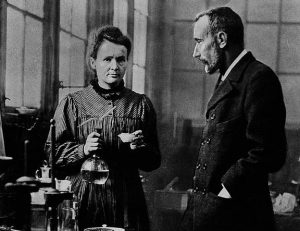 brown or black masses and containing radium. She also championed the development of X-rays, following her husband’s death in a street accident in Paris on 19 April 1906.
brown or black masses and containing radium. She also championed the development of X-rays, following her husband’s death in a street accident in Paris on 19 April 1906.
The fact that the notebook and related paraphernalia are still radioactive a century later is not as well known. The most common isotope of radium, the deadly chemical Curie carried in her pockets, has a half-life of 1,601 years. That said, people will not be able to go digging through the Curie’s library any time in this century, either. It is also known now, but wasn’t then, that the chemicals would end Curie’s life at a fairly early age. Curie died on July 4, 1934, of aplastic anemia, believed to be caused by prolonged exposure to radiation. She was 58 years old.
 Strange things have been known to happen over the centuries of Earth’s existence. Most end up being clearly explained. Some are explained, but few people believe the explanation, and still others are forever mysteries…destined to have no possible explanation. People, especially those who witness the event, just know that it did happen. Often, wars are filled with strange stories. Everything from bombs killing everyone in an area, except for one lone old woman; to enemy soldiers allowing a soldier to go free, even though the enemy clearly had the upper hand. Of course, some mysteries defy any possible explanation. Such is the case of the Phantom Fortress. If one looks there can be found all manner of oddities and anomalies scattered in the background of the more sensational news of the fighting of a war, coming from land, air, and sea. From ghost ships found floating in the oceans years after they were last seen, their crews mysteriously missing, with no sign of violence or death on board. Of course, the stories run wild, sighting every possibility from UFOs; to disappearance to another dimension; to desertion, though hard to explain, when no trace of the crew ever showed up anywhere else. Still, few were more strange than the Phantom Fortress.
Strange things have been known to happen over the centuries of Earth’s existence. Most end up being clearly explained. Some are explained, but few people believe the explanation, and still others are forever mysteries…destined to have no possible explanation. People, especially those who witness the event, just know that it did happen. Often, wars are filled with strange stories. Everything from bombs killing everyone in an area, except for one lone old woman; to enemy soldiers allowing a soldier to go free, even though the enemy clearly had the upper hand. Of course, some mysteries defy any possible explanation. Such is the case of the Phantom Fortress. If one looks there can be found all manner of oddities and anomalies scattered in the background of the more sensational news of the fighting of a war, coming from land, air, and sea. From ghost ships found floating in the oceans years after they were last seen, their crews mysteriously missing, with no sign of violence or death on board. Of course, the stories run wild, sighting every possibility from UFOs; to disappearance to another dimension; to desertion, though hard to explain, when no trace of the crew ever showed up anywhere else. Still, few were more strange than the Phantom Fortress.
On November 23, 1944, a British Royal Air Force anti-aircraft unit stationed near Cortonburg, Belgium was suddenly surprised to see an American Army Air Corps B-17 bomber, nicknamed the “Flying Fortress,” heading in their direction. Because there was no such landing scheduled and because of the speed of the incoming aircraft it was assumed that it was preparing to make an emergency landing at the base. Still, after checking with the base tower, it was confirmed that that no such B-17 landing was expected. Be that as it may, this plane was coming in for a landing, so the gunner crew watched helplessly as the massive aircraft came hurtling in towards a nearby open, plowed field.
No matter what standards you use, this landing was a messy one to say the least. The plane bounced and swerved along as the terrified gunners looked on. It finally came to a stop dangerously close to their position after one of its wings clipped the ground. Nevertheless, it was still in one piece and had not actually crashed, but it was an incredibly rough landing. The stunned gunners watched as the aircraft sat there looming over the field, its propellers continuing to spin. The minutes ticked by, but no one exited the plane. After waiting 20 minutes with no sign of human activity, and the plane just sitting there with its engines running, the gunner crew decided to go in and investigate. They had no idea what kind of a scene awaited them inside, but what they found, they never could have guessed. Upon opening the entry hatch under the fuselage, they entered. The gunner crew expected that the crew had been injured or was otherwise unable to get out of the plane, but what they found was that the plane was completely empty. Unable to believe what they had just witnessed, especially in light of the empty plane, the gunner crew made a full sweep through the aircraft. The gunner crew reported that it looked like the crew had just recently been there and must have left the aircraft in a hurry. They found chocolate bars unwrapped and half eaten lying about, a row of neatly folded parachutes, with none apparently missing, and jackets that had been neatly hung up.
The superior officer, a John V. Crisp, would say of the eerie scene, “We now made a thorough search and our most remarkable find in the fuselage was about a dozen parachutes neatly wrapped and ready for clipping on. This made the whereabouts of the crew even more mysterious. The Sperry bomb-sight remained in the Perspex nose, quite undamaged, with its cover neatly folded beside it. Back on the navigator’s desk was the code book giving the colours and letters of the day for identification purposes. Various fur-lined flying jackets lay in the fuselage together with a few bars of chocolate, partly consumed in some cases.” Crisp found himself in an awkward position. He knew what he was seeing. He knew that he would have to write up the report on the incident. And most importantly, he knew that his men were looking to him for answers. Where had the crew of the “Phantom Fortress” gone and how had the plane landed on its own? This was not during a time when planes could be programed to land. No one had any idea how this could have come to pass. Crisp told the men to shut the engines down, and they inspected the planes interior further. The men looked for anything that might provide answers. The log book was found opened, and the last cryptic words written in it were “bad flak.” Yet, all of the parachutes seemed to be accounted for and the exterior of the plane did not have evidence of flak damage, or any damage except for what it had incurred in its rough landing, such as the buckled wing and one disabled engine. The log entry just seemed strange considering.
The B-17’s crew was eventually found, alive and well. For their side, they said, “They changed their course towards Brussels, Belgium, at the same time making the plane lighter by dumping and jettisoning any unnecessary or nonessential equipment on board. When the plane still continued to suffer and a second engine on the struggling plane sputtered out, it was decided that the aircraft would be unable to make the journey, and the crew had then decided to bail out. The B-17 was put on autopilot and left to its fate as the crew jumped to safety. No one thought it would make it very far, let alone somehow land, but land it did.” It seemed as if they honestly thought they had been in battle, and even more, that they had bailed out, with parachutes that were miraculously replaced. Still, why did ground crew report all 4 engines working as the bomber had approached, with one being damaged only upon landing, when the report said that 2 engines had been knocked out during the mission? Where was the damage from the claimed enemy fire? Perhaps most mysterious of all, how had a large, cumbersome plane like the B-17 manage to come to a landing without a pilot?
Authorities on the case, as well as crew members of the Phantom Fortress, suggested some theories to explain the mysteries surrounding the event. For instance, with the engines it could have been that the technical difficulties cleared up on their own after the crew had bailed out, making the plane seem to have 4 fully operating engines on approach, although why they would start working again after being taken out remains mysterious. If the engines had been in bad enough shape for the crew to abandon the aircraft it seems odd that they should kick back into working order on their own and continue whirring away even after the rough landing. As to the lack of any apparent visible damage from enemy fire, the gunner crew could have simply missed the damage due to the untrained eyes of the team that initially investigated the plane after it had landed. They were just a gunner crew, not trained aviators, and may have mistaken the damage reported by the B-17 crew as being from the crash. They might not have noticed that the aircraft had sustained battle damage, but then again they were anti-aircraft gunners and might have had some idea. With the parachutes, it was surmised that they had possibly mistaken some spare parachutes as the full compliment. However, this is all speculation, and the mystery has never been totally solved. Still, the biggest mystery simply cannot be explained away. How did the B-17 come to a landing mostly intact without a pilot? Autopilot is one thing, but landing is another beast altogether. As the saying goes, “Flying is easy, landing is hard.” A pilotless B-17 landing by itself with no one on board was unprecedented. It should have careened into the ground to crash into a ball of fire and debris, or at least ended up a heap of twisted wreckage. So how could this happen?
Although no one really knows for sure, the main theory is “that the plane simply lost altitude slowly, at just the right speed, and with just the right angle of descent to come down relatively softly enough to appear as if it was landing, with the B-17’s legendary toughness and sturdy frame managing to hold it together to keep it from disintegrating.” To this, I say, “Come on!! Get serious!!” The odds of all of this happening in just such a way is all but impossible. Also, there is the rather odd detail that this unmanned plane just happened to come 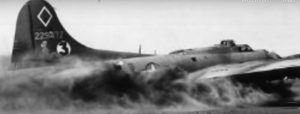 down in the exact best place to land under the circumstances, in that wide open field, and not one of the countless other places it could have come down more tragically. Its just too odd. Nevertheless, the mystery landing of the “Phantom Fortress” did happen. The details of how it did remain mysterious and open to speculation. What we do know for sure is that this B-17 was on a bombing mission in Germany, that it did land without a crew in that field, and that the crew members were later found to have been alive and well with quite a story to tell.
down in the exact best place to land under the circumstances, in that wide open field, and not one of the countless other places it could have come down more tragically. Its just too odd. Nevertheless, the mystery landing of the “Phantom Fortress” did happen. The details of how it did remain mysterious and open to speculation. What we do know for sure is that this B-17 was on a bombing mission in Germany, that it did land without a crew in that field, and that the crew members were later found to have been alive and well with quite a story to tell.

